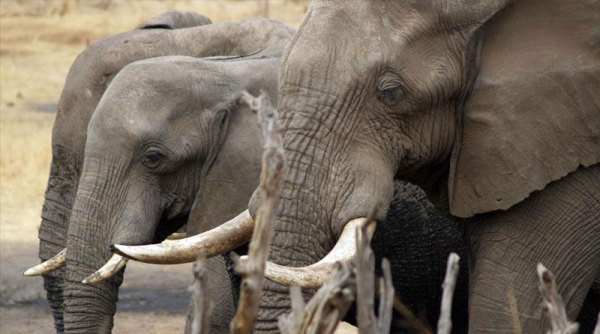The illegal killing of elephants for their ivory is now at “critically high levels” in Africa with increased involvement by organized crime groups, leading to their possible extinction in parts of the continent, the UN Office for Drugs and Crime (UNODC) on 13 November 2014 said.
“Wildlife crime is a serious and growing problem worldwide,” said the International Consortium on Combating Wildlife Crime (ICCWC) ‘ in releasing Guidelines on methods and procedures for ivory sampling and laboratory analysis in support of the deployment of forensic technology to combat elephant poaching.*
Led by UNODC, as a member of the consortium, the Guidelines were developed together with experts from around the world.
Flagging the “critically high levels” of elephant poaching in Africa, the document said: “There is strong evidence of increased involvement of organized crime groups, and in some areas rebel militia, operating through well-developed criminal networks.”
Risk of Extinction
UNODC said that the current levels of elephant poaching in Africa are unsustainable and could lead to local extinctions across many African elephant range countries.
UNODC Executive Director Yury Fedotov said in a press release: “We believe that the use of the Guidelines will support more timely, thorough and effective investigations, resulting in an increased number of successful prosecutions and a reduction in this illegal trade.”
Intended for worldwide use, the guidelines are aimed at first responders, investigators, law enforcement officials, forensic scientists, prosecutors and the judiciary, according to UNODC.
“Their purpose is to facilitate the use of forensic science to the fullest extent possible in order to combat wildlife crime, and in particular, to combat the trade in illegal ivory through the provision of guidance to support transnational criminal investigations and law enforcement operations,” it said.
The Convention on International Trade in Endangered Species of Wild Fauna and Flora (CITES) Secretary-General John E. Scanlon said “the guidelines will help increase the use of forensic technology, a crucial tool in the fight against wildlife crime, to determine the origin of seized wildlife specimens, and support the identification and arrest of suspects.”
Political momentum for urgent action has been building, according to UNODC.
In 2013, the 16th CITES Conference of the Parties adopted measures to encourage the increased use of forensic technology to fight wildlife crime.
And last year at the African Elephant Summit held in Gaborone, Botswana, governments pledged to tackle the illegal ivory chain and called for the development of a network of forensic labs. The guidelines will support these actions, UNODC said.
Under the umbrella of ICCWC, the CITES Secretariat, INTERPOL, UNODC, the World Bank and the World Customs Organization (WCO) are working together to bring coordinated support to wildlife law enforcement agencies and networks at national, regional and global levels to enhance global cooperation and capacity to combat wildlife and forest crimes. (*Source: UN Release).
Read also:
Celebrating the Majesty of One of the Most Threatened Animals on World Elephant Day
World Marches to Demand an End to Illegal Trade in Wildlife
The Agony of African Elephants: Killings Doubled; Illegal Ivory Trade Tripled
UN Proposes New Treaty to Protect Elephants, Polar Bears, Sharks, Medicinal Plants
Massive Smuggling of Elephant Ivory, Rhino Horn and Great Apes
Eighty Per Cent of World’s Forests Degraded, Destroyed
Rising Voracious Consumption, Living as If We Had Two Planets
Save The Planet? Just Eat Cars, Drink Fuel!
Big Business Suffocating Our Lungs
All the Benefits of Amazon Plants and Foods in a UN Book
The Seed Emergency – The Big Threat to Food, Democracy
Big Business Stealing Seeds, Devouring Life Cycle
2014 Human Wrongs Watch











